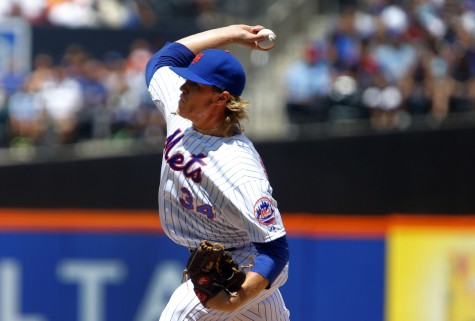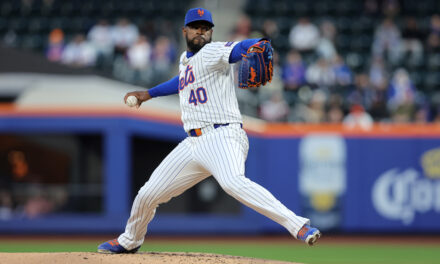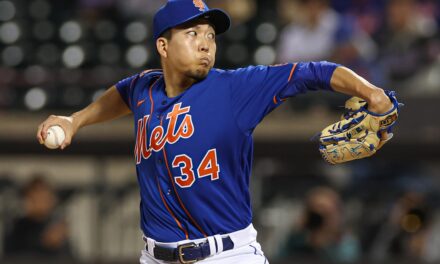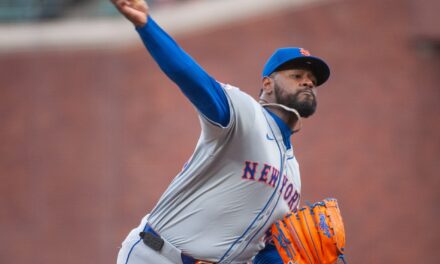
Stat Line: 7 IP, 3 R, 4 H, 5 SO, 2 BB
Noah Syndergaard learned one valuable lesson yesterday against the Colorado Rockies.
The Rockies are a worn out, non-contending playoff team. They are playing in a day game late in the season before they fly out of that night. They want to get on that plane as soon as possible so they can get to their destination as early as possible. This translates to a team coming out swinging to speed the pace of the game.
DJ LeMahieu and Nolan Arenado jumped on fastballs early in their first inning at-bats for two solo homeruns. Syndergaard quickly recognized his less than normal command and adjusted, using his full repertoire of pitches to battle through the remainder of the outing.
Adapting Strategy
Typically, young pitchers game plan adjustments game to game rather than inning to inning. Syndergaard showed veteran game management acumen far ahead of his 22 year old age, making key adjustments after the second inning.
In the first two innings, Syndergaard threw a first pitch fastball to nine of the 10 Rockies faced. During the third through sixth innings, he began pitching backwards, starting only five of the following 13 batters with fastballs.
Simply, pitching backwards is the strategy of throwing hitters off-speed pitches early in an at-bat to set up the pitchers fastball later in the at-bat. Matt Harvey integrated this strategy mid-season which reflects his 2.54 ERA and 9.76 K/9 rate over his past 11 starts.
Inside Fastball
Another excellent adjustment Syndergaard exhibited was throwing his 97 mph fastball inside to opposing hitters. On LeMahieu and Arenado’s first inning homeruns, each hitter leaned over home plate and into Syndergaard’s middle to outside located fastballs.
This proves Syndergaard became predictable, falling into the first pitch fastball routine noted above and on Syndergaard’s scouting report to opposing teams.
Sharp Curveball
Syndergaard threw sharp curveballs at a 67.9% strike rate resulting in a 17.9% miss rate (whiff rate). For comparison, in 2014 Aroldis Chapman’s 100+ mph fastball miss rate was 19.2%.
Use of Changeup
I’ve noted in past articles the hope that Syndergaard could acquire enough confidence in his changeup to throw it 8 to 12 times a game. He doesn’t need to throw the changeup for a strike or create outs but merely show it to opposing hitters. This will effectively change eye level and set up his 97 mph fastball to look even harder to opposing hitters.
Last night, Syndergaard’s changeup exuded sharp movement but lacked the command knee high needed to produce a higher miss rate.
Looking Forward
Syndergaard’s next start will come sometime next week against the Baltimore Orioles. He’s faced American League East opponents twice this season, struggling earlier this month against the Tampa Bay Rays but struck out 11 against the Toronto Blue Jays in June.
Stat of the Night
Syndergaard’s 11.1% hard contact percentage was second lowest of his season. Excluding the two homeruns, the hard contact percentage is 0%.
Thanks to @FanGraphs and @BrooksBaseball databases for statistics.
Follow Chris Zaccherio on Twitter @ziography for more Mets pitching insight that goes beyond statistics.














